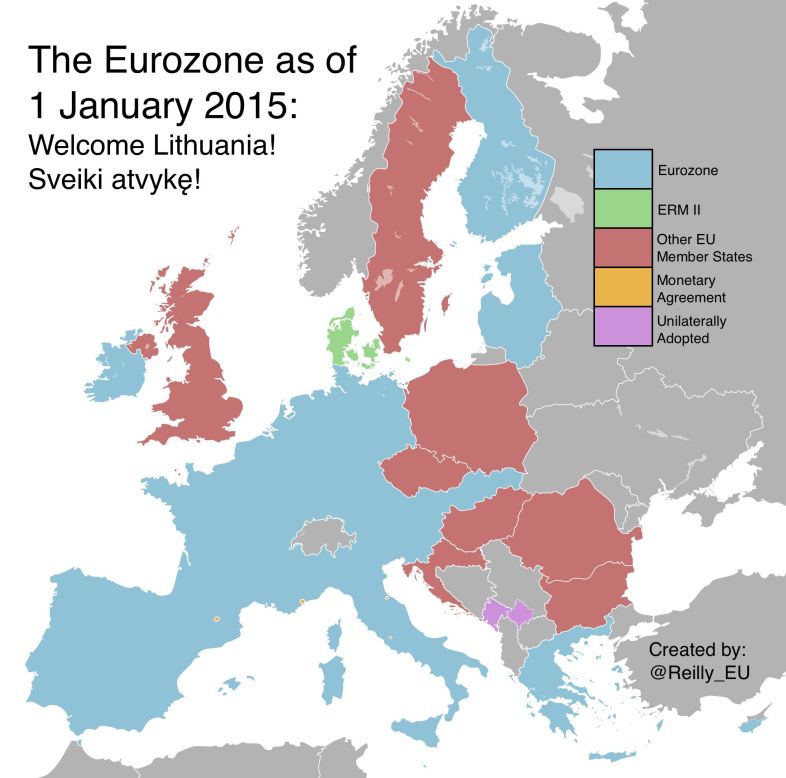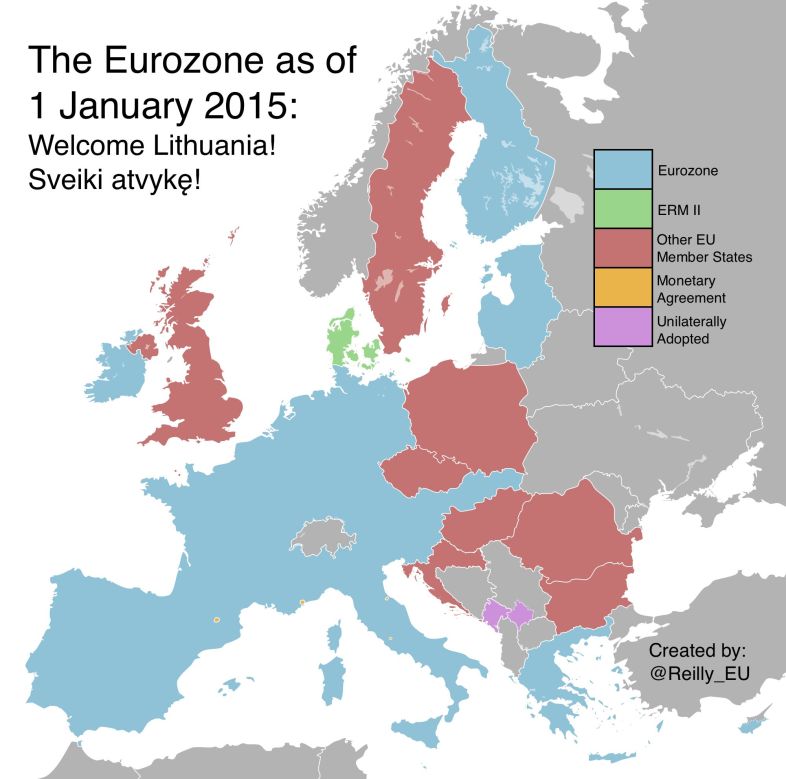Since 2001, when Greece adopted the Euro as its currency, seven countries have joined the Eurozone. Slovenia began using the Euro in 2007, Cyprus and Malta in 2008, Slovakia in 2009, Estonia in 2011, Latvia in 2014, and Lithuania in 2015. These countries are small. Together, they are home to around 14.5 million people, just 4 percent of the Eurozone’s total population.
This is not suprising: from 2001 to 2008 European countries were more focused on expanding the European Union and NATO than expanding the Eurozone, while since 2008 the economic slowdown in Europe has has limited the ambition of European institutions to expand in a meaningful way. Key economies in the region, like Britain, Poland, Sweden, Norway, and Switzerland, not to mention Russia or Turkey, do not appear likely to join the Eurozone any time soon, if ever.

Still, the admittance of these seven small states has altered somewhat the geography of the Eurozone. Slovakia is the only state among the “ex-satellites” of the former Soviet Union (the others being Poland, Romania, Hungary, the Czech Republic, and Bulgaria) to adopt the Euro, and it is the only Eurozone country to border Ukraine.
Slovenia is the first among the states of the former Yugoslavia to formally join the Eurozone, and its membership gives Austria and Germany a Eurozone-only link to the Mediterranean that bypasses Italy. The Baltics are the only former Soviet Union republics to adopt the Euro, and their inclusion also means that Finland is no longer the extreme geographic outlier of the Eurozone that it was between 1999 (when it and all ten of the other Eurozone countries apart from Greece joined) and 2011, when Estonia joined.
Similarly, the Cyprus and Malta additions mean that Greece is no longer an outlier in the Eurozone. Even before they joined, though, Greece was still only 100 km from Italy — whereas Finland had been more than 800 km from any fellow Eurozone economies before the Baltics joined.














Leave A Comment